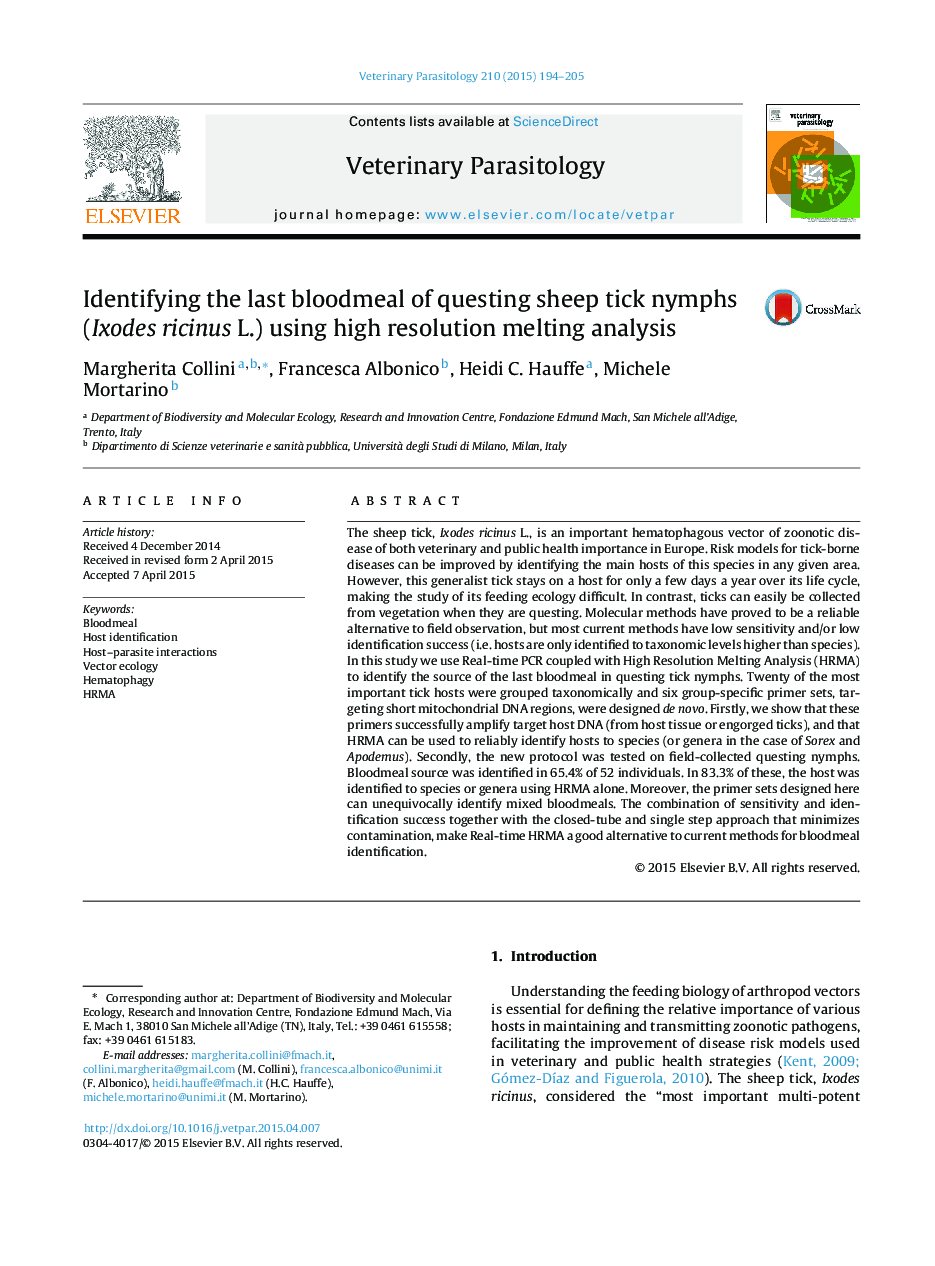| کد مقاله | کد نشریه | سال انتشار | مقاله انگلیسی | نسخه تمام متن |
|---|---|---|---|---|
| 5802461 | 1555670 | 2015 | 12 صفحه PDF | دانلود رایگان |

- First application of High Resolution Melting Analysis (HRMA) to bloodmeal analysis in questing Ixodes ricinus.
- de-novo design of six group-specific primer sets targeting short mtDNA regions of twenty of the most important sheep tick hosts.
- Real-time HRMA testing on control DNA samples and field collected questing nymphs.
- HRMA shown to be a reliable method for identifying tick hosts to species and genera.
- The new HRMA protocol showed good sensitivity (65.4%) and high identification success to species (83.3%), as well as reliable mixed bloodmeal identification.
The sheep tick, Ixodes ricinus L., is an important hematophagous vector of zoonotic disease of both veterinary and public health importance in Europe. Risk models for tick-borne diseases can be improved by identifying the main hosts of this species in any given area. However, this generalist tick stays on a host for only a few days a year over its life cycle, making the study of its feeding ecology difficult. In contrast, ticks can easily be collected from vegetation when they are questing. Molecular methods have proved to be a reliable alternative to field observation, but most current methods have low sensitivity and/or low identification success (i.e. hosts are only identified to taxonomic levels higher than species). In this study we use Real-time PCR coupled with High Resolution Melting Analysis (HRMA) to identify the source of the last bloodmeal in questing tick nymphs. Twenty of the most important tick hosts were grouped taxonomically and six group-specific primer sets, targeting short mitochondrial DNA regions, were designed de novo. Firstly, we show that these primers successfully amplify target host DNA (from host tissue or engorged ticks), and that HRMA can be used to reliably identify hosts to species (or genera in the case of Sorex and Apodemus). Secondly, the new protocol was tested on field-collected questing nymphs. Bloodmeal source was identified in 65.4% of 52 individuals. In 83.3% of these, the host was identified to species or genera using HRMA alone. Moreover, the primer sets designed here can unequivocally identify mixed bloodmeals. The combination of sensitivity and identification success together with the closed-tube and single step approach that minimizes contamination, make Real-time HRMA a good alternative to current methods for bloodmeal identification.
Journal: Veterinary Parasitology - Volume 210, Issues 3â4, 15 June 2015, Pages 194-205